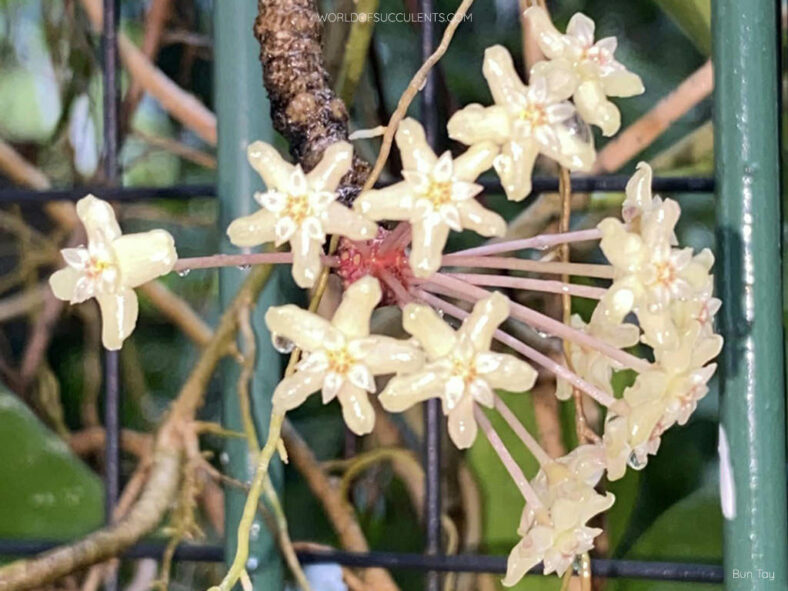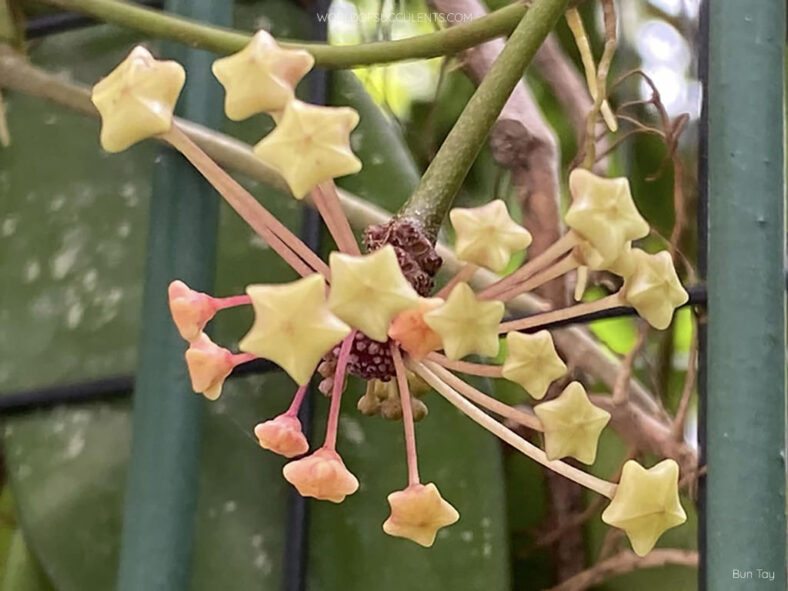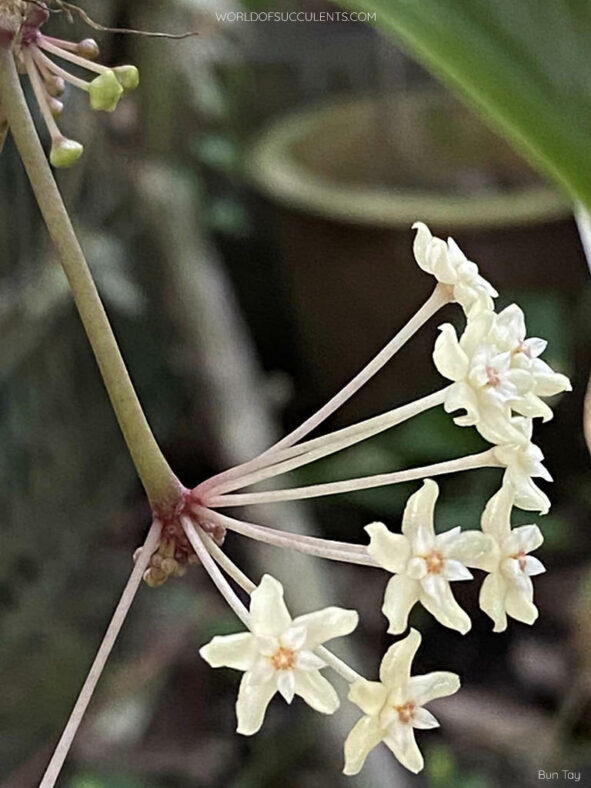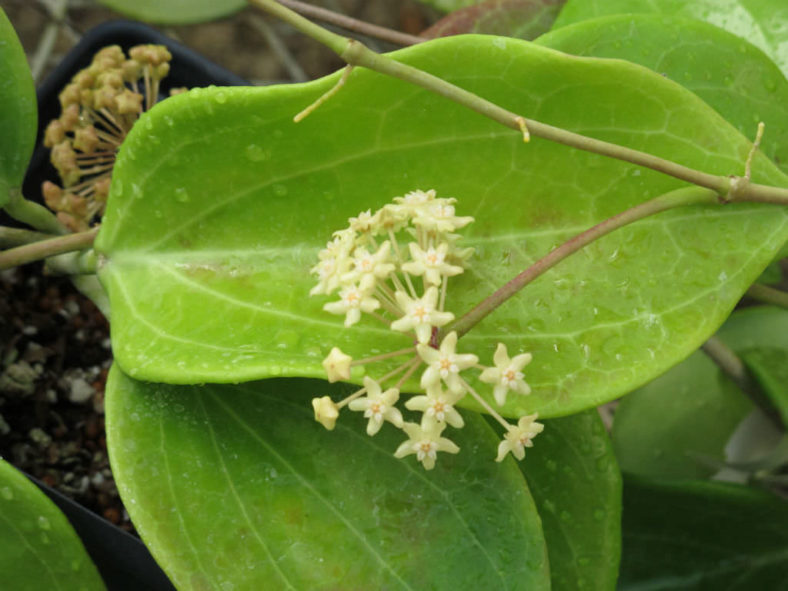Hoya merrillii is a beautiful addition to any houseplant collection, known for its unique and stunning foliage.
Scientific Name
Hoya merrillii Schltr.
Common Name(s)
Wax Plant, Porcelain Flower
Synonym(s)
Hoya merrillii subsp. merrillii
Scientific Classification
Family: Apocynaceae
Subfamily: Asclepiadoideae
Tribe: Marsdenieae
Genus: Hoya
Etymology
The specific epithet "merrillii" (pronounced mer-IL-ee-eye) honors the discoverer of the species, Elmer Drew Merrill (1876-1956), an American botanist and taxonomist.
Origin
Hoya merrillii is native to the Philippines. It was first discovered at low altitudes on Mindoro Island, where it grows as an epiphyte on the trees in the humid forests near water streams. However, it was later discovered to be much more widespread than initially thought.
Description
Hoya merrillii is a lovely plant with slender stems that bear glossy, dark green leaves with recurved edges and a pretty pattern of veins. The leaves are elliptical and can reach lengths of up to 4.8 inches (12 cm) and widths of 2.4 inches (6 cm). When exposed to intense light, the leaves turn a beautiful shade of red and purple.
This plant is a heavy bloomer and produces large clusters of sweetly scented flowers during the warmer months. The flowers are star-shaped, with a pale yellow corolla and a cream-colored corona that has a yellow center. Each umbel bears up to 25 flowers, lasting about 4 to 5 days. Once the plant starts blooming, the umbels will produce new buds as soon as the old ones are spent. Sometimes, there are even young buds, while others are blooming.

How to Grow and Care for Hoya merrillii
Light: Even if this plant can tolerate lower light levels, it may become weak and leggy if the light is too low, resulting in fewer leaves and flowers. Therefore, keeping it indoors in bright, indirect sunlight is best.
Soil: Well-draining soil that provides excellent aeration and does not hold too much water is most important for growing a healthy plant.
Temperature: Hoya merrillii thrives in hot and humid climates, so keep it away from drafty windows and doorways during the colder months. It grows best in USDA Plant Hardiness Zones 11a to 11b, with average minimum winter temperatures ranging from 40°F to 50°F (4.4°C to 10°C).
Watering: Since this plant is sensitive to overwatering, soak the soil thoroughly in spring and summer, but allow it to dry out before watering again. Otherwise, you will increase the risk of root rot, and your plant will not be happy. It is relatively dormant during the fall and winter, needing only moderate watering.
Fertilizing: Although Hoya merrillii is not a heavy feeder, it can benefit from a high-potassium fertilizer at half strength every two weeks during the growing season.
Repotting: As an epiphyte, this plant has a shallow root system and doesn't need a deep container. It also doesn't require frequent repotting. It prefers to be slightly rootbound, so repot it in spring only if it outgrows its container.
Propagation: Although layering is the easiest method, using stem cuttings is the most popular way to propagate Hoya merrillii. Using leaf cuttings can be more challenging, while starting it from seeds is the simplest but the most time-consuming method. For best results, take cuttings only when the plant is actively growing. Sow seeds in spring and summer.
Learn more at How to Grow and Care for Hoya.
Toxicity of Hoya merrillii
Hoya merrillii is considered non-toxic, so it's safe to have around kids and pets.
Links
- Back to genus Hoya
- Succupedia: Browse succulents by Scientific Name, Common Name, Genus, Family, USDA Hardiness Zone, Origin, or cacti by Genus
Photo Gallery
Click on a photo to see a larger version.


